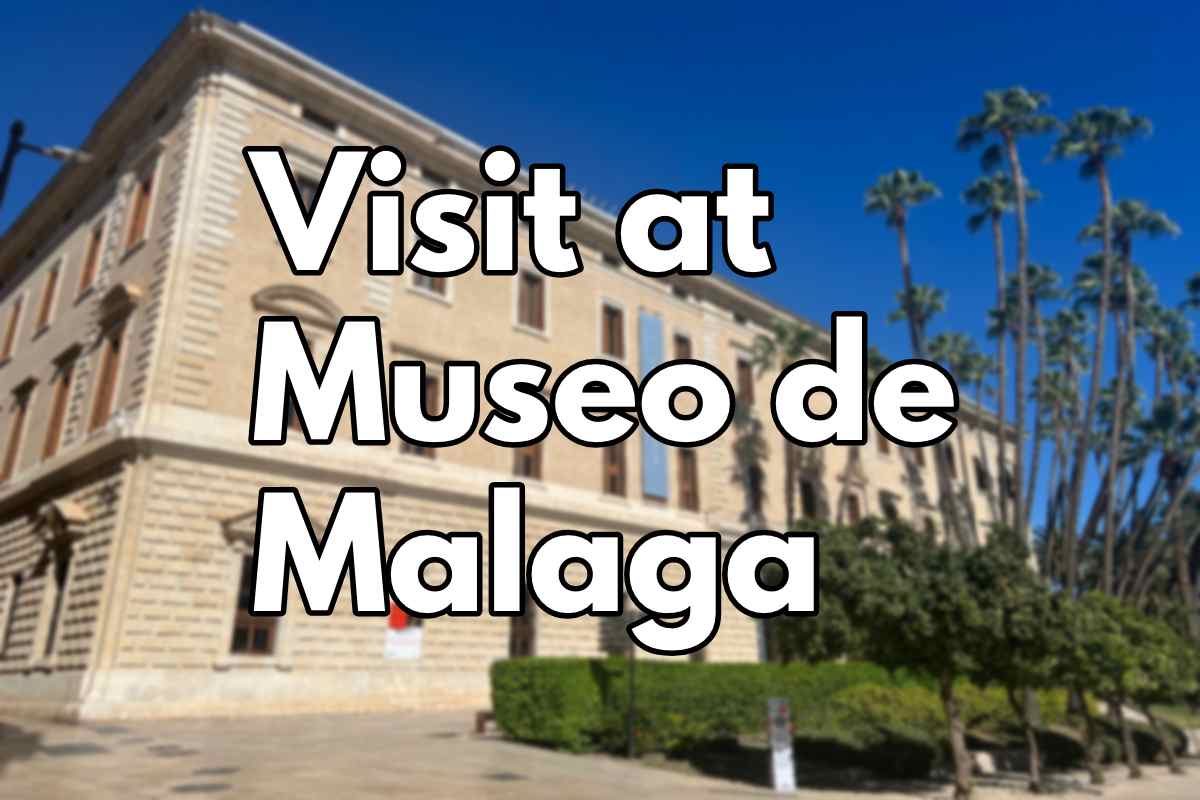Museo de Málaga, housed in the Palacio de la Aduana, is Andalusia’s largest museum. Discover its history, impressive collections of art and archaeology, and why this cultural landmark is a must-visit in the heart of Málaga.
Discovering Málaga’s Cultural Heart
As an expat living in Málaga, I make it a point to regularly explore what the city has to offer, from its hidden gems to its grand historical treasures. This time, I decided to visit the Museo de Málaga, a place that locals often recommend as one of the most important cultural experiences in the city.
Located in the impressive Palacio de la Aduana, right in the heart of Málaga and surrounded by landmarks such as the Roman Theatre and the Alcazaba, the museum immediately draws your attention. The neoclassical building, designed in the late eighteenth century by Manuel Martín Rodríguez, a student of the renowned architect Sabatini, was originally constructed as the royal customs house, controlling goods arriving at the port. Over time, it served different purposes, even housing a tobacco factory and government offices. Eventually, the palace fell into disrepair, until a major restoration project brought it back to life. Since December 2016, it has become the home of the largest museum in Andalusia.
The Origins of the Museo de Málaga
The history of the museum itself is fascinating. It grew out of two separate institutions: the Museum of Fine Arts, founded in 1913, and the Archaeological Museum, established in 1945. For decades, the collections were scattered around the city. The fine arts collection housed in the palace of the Counts of Buenavista, and the archaeological artifacts displayed in the Alcazaba.
Local residents long campaigned for these collections to be united under one roof in a setting worthy of their importance. The grassroots movement known as “La Aduana para Málaga” eventually succeeded, and in 2016, both collections finally found their permanent home in the beautifully restored Palacio de la Aduana. Inside the museum, there is even a dedicated section that tells the story of this successful civic effort.
A Journey Through Centuries – The Archaeology Collection
One of the highlights of the Museo de Málaga is its archaeology collection, which includes more than fifteen thousand objects. Walking through the galleries on the second floor feels like traveling through history itself, from prehistoric times to the Phoenician and Roman periods, and on into the Middle Ages.
Among the most valuable pieces are the Roman bronze tablet Lex Flavia Malacitana from the first century AD, a Phoenician sarcophagus dating back to the fifth century BC, and intricate mosaics, including the famous “Birth of Venus” discovered in Cártama. What makes the experience even more unique is the open-storage section, where visitors can see part of the museum’s vast collection that would normally remain hidden behind closed doors.
The Art Collection – From Spanish Masters to Modern Visionaries
Equally impressive is the fine arts collection, housed on the first floor. With more than two thousand works, it ranges from fifteenth-century paintings and sculptures to contemporary art. Visitors can admire masterpieces by Goya, Zurbarán, and Alonso Cano, as well as sculptures by Pedro de Mena.
A particular point of pride for the museum is the nineteenth-century Málaga school of painting, represented by artists such as Muñoz Degrain, Moreno Carbonero, and Ferrándiz. Alongside these works, there are also paintings by Sorolla, Picasso, and members of the twentieth-century avant-garde, as well as international artists like Franz Marc, which place Málaga’s artistic legacy within a broader European context. For me personally, this floor was the highlight of the entire visit, offering an inspiring overview of Spanish creativity across centuries.
The Palacio de la Aduana – A Monument in Its Own Right
Beyond the collections, the building itself is worth a visit. The central patio with its arcades provides an inviting space that has become a popular meeting point for both locals and tourists. It’s the perfect place to pause, take a photo for Instagram, and admire the grandeur of the restored customs house. The museum’s modern interior design makes the experience comfortable and accessible, while the roof topped with distinctive ceramic tiles adds another layer of architectural charm.
Practical Information for Visitors
One of the best things about Museo de Málaga is its accessibility. For citizens of the European Union, admission is free, while for others it costs just €1.50, a symbolic price for such a cultural treasure. The museum is open from Tuesday to Saturday between 9:00 am and 9:00 pm, and on Sundays and public holidays until 3:00 pm. It remains closed on Mondays, except when the day precedes a public holiday.
Final Thoughts – Why You Must Visit Museo de Málaga
Visiting the Museo de Málaga is not just about looking at art or ancient artifacts, it’s about experiencing the city’s story in one place. From Phoenician relics to modern paintings, from the grandeur of its neoclassical palace to the grassroots campaign that made it possible, the museum embodies Málaga’s past, present, and future.
For me, it was one of the most rewarding cultural experiences in the city. If you’re living in Málaga, or simply visiting, make sure to add this museum to your itinerary. It is a space where history and art come together, and where the spirit of Málaga truly comes alive.

